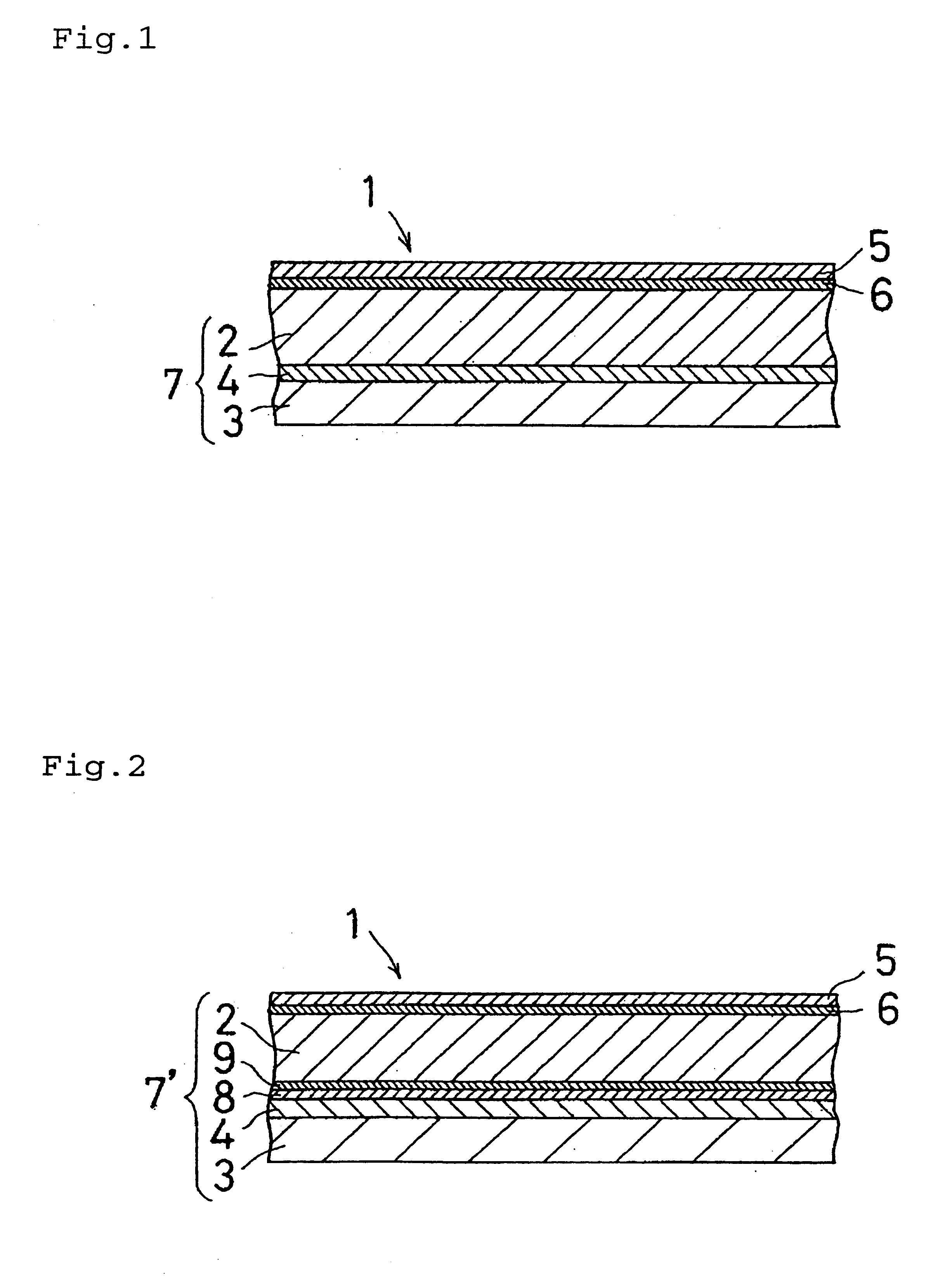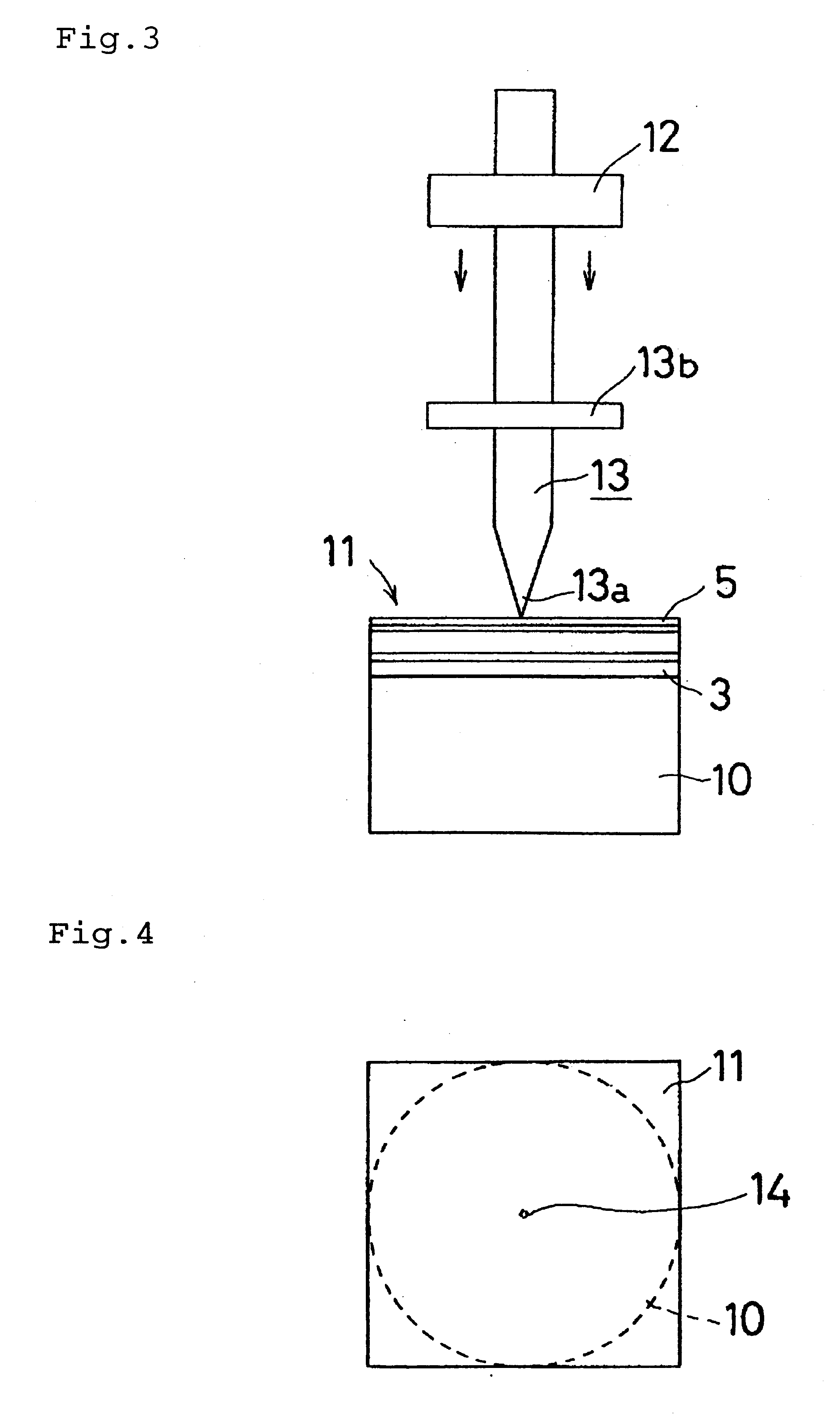Transparent laminate
a technology of transparent laminates and laminates, applied in the field of transparent laminates, can solve the problems of inability to achieve practicability, inability to reduce visibility through impact positions, and inability to meet the impact resistan
- Summary
- Abstract
- Description
- Claims
- Application Information
AI Technical Summary
Problems solved by technology
Method used
Image
Examples
example 1
The polycarbonate-based resin plate B was placed facing one surface of the acrylic resin plate A at a certain distance, the acrylic resin film B ("Sunduren.RTM. 002ANTB") was inserted between them, and they were pressed for 1 minute by a press molding machine at a heat plate temperature of 150.degree. C., a preheating time of 2 minutes and pressing pressure of 50 kgf / cm.sup.2.sub.1 then, pressed for 4 minutes in a cooling press at a pressing pressure of 50 kgf / cm.sup.2, to bond the polycarbonate-based resin plate B (surface layer(5)) via the acrylic resin B (surface bonding layer(6)) to the acrylic resin plate A (first substrate(2)).
Then, the polycarbonate-based resin plate A (second substrate(3)) was placed facing the other surface of the acrylic resin plate A (first substrate(2)) at an distance of 2 mm. The distance was provided by inserting a soft vinyl chloride hose having a thickness of 2 mm between the acrylic resin plate A (first substrate(2)) and the polycarbonate-based resi...
example 2
The polycarbonate-based resin plate B (surface layer(5)) was placed facing one surface of the acrylic resin plate A (first substrate(2)) at a certain distance, the acrylic resin film B ("Sunduren.RTM. 002ANTB") was inserted between them, this sandwich was placed in a vacuum bag, air in the vacuum bag was exhausted at an atmosphere temperature of 135.degree..pi.C. to adhere them temporarily. Then, the sandwich was place in the autoclave, heated from room temperature at atmospheric pressure to 150.degree. C. at 9 atm. over 60 minutes and the temperature and the pressure were kept for 30 minutes, then, cooled down to room temperature at atmospheric pressure over 50 minutes, to bond the polycarbonate-based resin plate B (surface layer(5)) via the acrylic resin B (surface bonding layer(6)) to the acrylic resin plate A (first substrate(2)).
Then, the polycarbonate-based resin plate A (second substrate(3)) was bonded via the bisphenol type epoxy-based cured resin layer(first bonding layer(4...
example 3
A transparent laminate was obtained in the same manner as in Example 1 except that the acrylic resin plate C was used instead of the acrylic resin plate A as the first substrate(2). This plate had excellent transparency, and when it received impact several times at the same position, the impact position revealed almost no whitening.
The results of the evaluation of the obtained transparent laminate are shown in Table 1.
PUM
| Property | Measurement | Unit |
|---|---|---|
| Tg | aaaaa | aaaaa |
| thickness | aaaaa | aaaaa |
| thickness | aaaaa | aaaaa |
Abstract
Description
Claims
Application Information
 Login to View More
Login to View More - R&D
- Intellectual Property
- Life Sciences
- Materials
- Tech Scout
- Unparalleled Data Quality
- Higher Quality Content
- 60% Fewer Hallucinations
Browse by: Latest US Patents, China's latest patents, Technical Efficacy Thesaurus, Application Domain, Technology Topic, Popular Technical Reports.
© 2025 PatSnap. All rights reserved.Legal|Privacy policy|Modern Slavery Act Transparency Statement|Sitemap|About US| Contact US: help@patsnap.com



